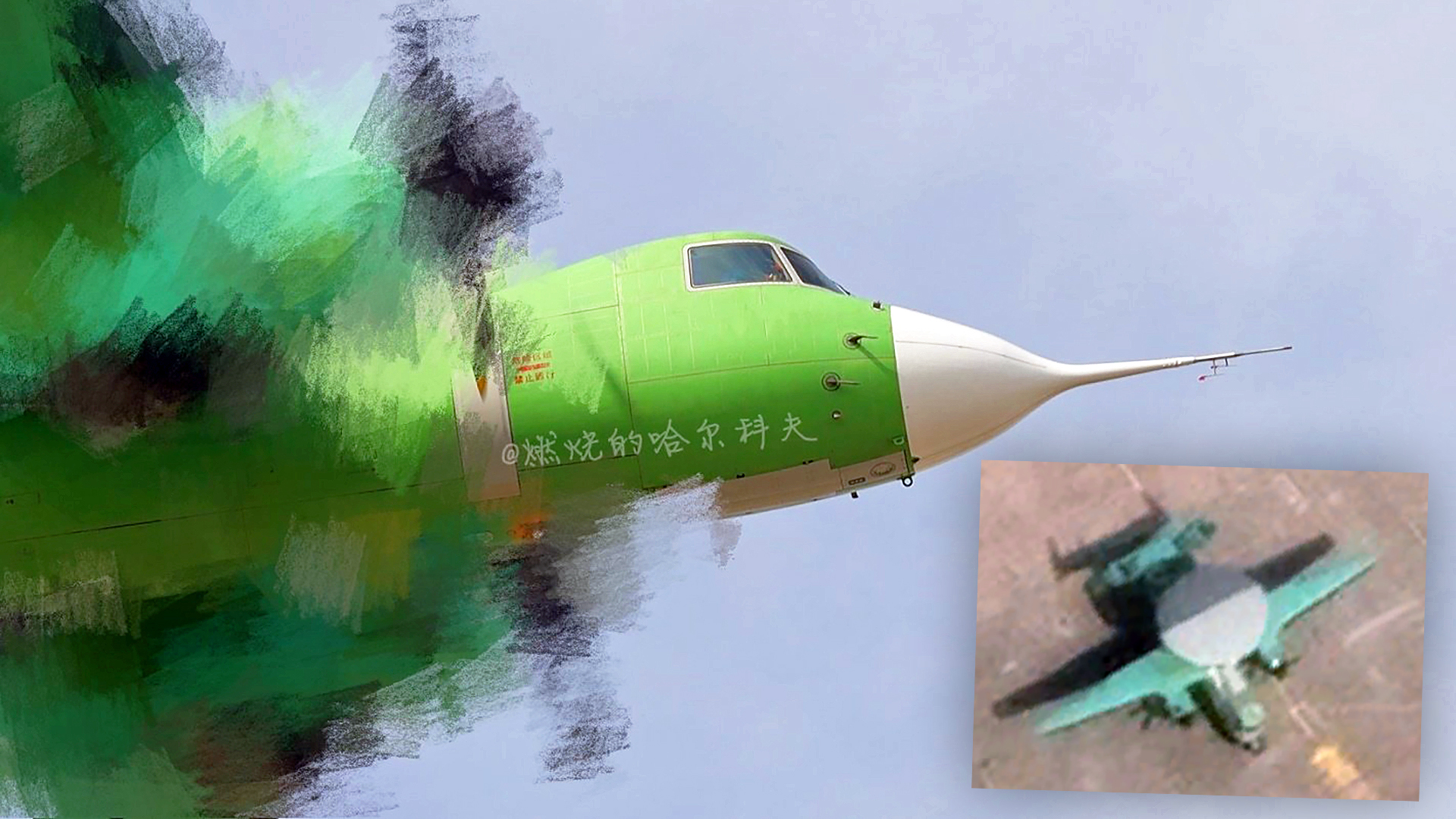A photo has emerged on social media offering the clearest look yet of the nose and nose section of the Chinese People’s Liberation Army Navy’s (PLAN) KJ-600 carrier-based airborne early-warning (AEW) aircraft. The snapshot surfaced around the same time as a video that reportedly shows the prototype undergoing flight tests over the city of Xi’an, where the aircraft is built. These developments all come a little over a month after the launch of China’s new domestically built Type 003 aircraft carrier Fujian, signaling the introduction of a new carrier air wing which the KJ-600 is expected to be a key component of.
China’s KJ-600 initially began flight trials in the fall of 2020 and is being developed by the Xi’an Aircraft Company. It is a twin turboprop aircraft that is at least outwardly very similar to the U.S. Navy’s E-2 Hawkeye. Like the E-2, the KJ-600 is also designed for a crew of four to six and features a large radar above the fuselage.


While the new static shot of the KJ-600’s nose and cockpit configuration certainly resembles the E-2, the video footage of the purported test flight over Xi’an city that came out a couple of days earlier, as well as many past images, also makes the aircraft’s ‘H’-style tail with several vertical stabilizers difficult to miss. Like the E-2, this is to provide stability even though airflow is blocked by the radar, especially at higher angles of attack as experienced during recovery on a carrier.
As of right now, at least four prototypes of the KJ-600s are currently in existence, and possibly as many as six. Twitter user @louischeung_hk even shared a brief video breaking down the recent KJ-600 sightings and noted that three of those prototypes have been spotted without the air-data probe used for flight testing that can be seen in the newest image.

In terms of the role that the KJ-600 will play in the air wing that the PLAN appears to be assembling for its newest Fujian aircraft carrier, it will be tasked with extending the carrier’s radar range dramatically, especially when it comes to spotting low-flying objects or even surface contacts, similar to how the E-2 operates. This is on top of working as a battlespace manager. Controllers onboard will vector aircraft as needed and work as central command and control and battlespace awareness elements for highly coordinated missions. The KJ-600’s radar picture and other passive sensor systems’ data will be linked back to the carrier group, and to other tactical aircraft, for real-time exploitation. Working as a central data-fusion and rebroadcasting node is also a good possibility. You can read all about E-2C operations in this past feature of ours.

The Type 003’s air wing will be far more diverse than its predecessors and will include J-35 stealth fighter jets as well as J-15 Flanker derivatives. The first high-resolution image of a prototype of the future J-35 fighter, which you can read about in detail here, appeared online last week and also comes amid China’s push to round out the fleet of its new Type 003 carrier. Drones, including stealthy types, will also be a core part of Fujian’s air wing, once it fully matures.

The June launch of China’s newest Type 003 carrier also underscores the KJ-600’s compatibility with the vessel’s catapult-launch capability. As of right now, it is unlikely that the KJ-600 will fly from China’s existing Type 001 Liaoning and Type 002 Shandong carriers as those ships are equipped with ski-jump ramps. While the PLAN’s active fleet of Shenyang J-15 fighter jets can deal with this launch concept at lower gross weights, the turboprop-powered KJ-600 will likely require a catapult, of which Type 003 has three.

Scope for further development could even include the potential for KJ-600 to be adapted for other use cases, like carrier onboard delivery (COD), anti-submarine warfare (ASW), drone controller, or tanker roles. Such a developmental precedent exists in the U.S. Navy’s C-2 Greyhound COD aircraft, which was derived from the E-2. Before that, the Navy also had carrier-based AEW, COD, and ASW aircraft like the E-1 Tracer, S-2 Tracker, and C-1 Trader that shared a core airframe.

With the J-35, KJ-600, and catapult-capable J-15 aircraft all seemingly on their way to becoming fixtures of China’s new Type 003 Fujian aircraft carrier, the PLAN is setting itself up for a massive leap in naval capability. Still, we are years out from this becoming a reality, but when it does, it will change the nature of the PLAN’s warfighting abilities forever.
Contact the author: Emma@thewarzone.com
